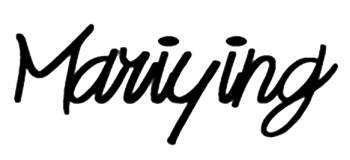How to Create a Unique Journal from Old Clothes: A DIY Guide
Do you have old clothes lying around that you no longer wear? Instead of throwing them away, why not transform them into something functional and personal—a handmade journal! In this guide, I’ll show you how to use fabric from your old clothes to make a unique journal cover, while using regular paper for the pages. It’s a fun, sustainable, and creative way to create a one-of-a-kind journal that you can use for writing, sketching, or journaling your thoughts.
Materials You’ll Need:
Old Clothes: Old shirts, jackets, skirts, or any fabric you want to repurpose.
Regular Paper: For the inner pages of your journal. This can be printer paper, sketching paper, or any paper that you like to write on.
Needles and Thread: For stitching and binding the pages.
Scissors: To cut your fabric and paper.
A Ruler and Pencil: For measuring and marking.
Glue: Strong adhesive (fabric glue or craft glue).
Clamps: To hold fabric in place while it dries.
Cardboard or Bookboard: For the journal cover.
Hole Puncher: To create holes in the pages.
Binder Rings: To hold your journal together.
Wooden Roller with Handle (Craft Tool): To help smooth the fabric onto the cardboard, ensuring no wrinkles or air bubbles.
Optional Embellishments: Buttons, beads, fabric paint, or anything else you want to personalize your journal.
Step-by-Step Process
1. Prepare Your Old Clothes
Select the old clothes you want to repurpose. Fabrics like denim, cotton, or wool work best for creating a sturdy and attractive cover. Feel free to mix and match fabrics for different textures and colorsChoosing the right fabric is critical to the look and durability of your handbook. Learn more about how to pick your handbook cover material.
2. Cut the Paper Pages
Cut your paper pages to size. A typical size for journal pages is 8x6 inches, but feel free to adjust the size to suit your style. Make sure all the pages are cut neatly to ensure a clean finish for your journal.For more information on how to choose the best type of binder, please refer to our [Binder Buyer's Guide].
3. Create the Journal Cover Structure
To create the structure of your journal, you’ll need three pieces of cardboard (or bookboard). These pieces will make up the front cover, the back cover, and the spine.
4.Front and Back Covers
Here’s where it gets fun! Your journal will require three pieces of cardboard to give it that sturdy, hardcover structure.
Front and Back Covers: Measure and cut two pieces of cardboard to the same size as your pages. These will be the outer covers.
Spine: For the spine, cut a third piece of cardboard. It should be the same height as the covers but around 1 inch wide (you can make it wider if you plan on adding more pages).
This three-part construction—front cover, back cover, and spine—will form the skeleton of your journal.
5. Assemble the Pages
While the cover is drying, take your cut paper pages and stack them neatly. Use a hole puncher to make evenly spaced holes along the edge where the pages will be bound. You can punch anywhere from 4-6 holes depending on the number of pages in your journal. Make sure they’re aligned for a clean finish.
6. Attach the Binder Rings
Instead of using needle and thread to bind the pages (as might be done in traditional bookbinding), you'll be using binder rings to keep everything together.
Here's how to do it:
Step 1: Line up the holes on your journal pages with the holes in the spine.
Step 2: Open the binder rings and insert them through the aligned holes.
Step 3: Once the rings are in place, close them securely. Make sure the pages are held tightly but still move freely within the rings.
Step 4: For extra security, add a fabric tab on the spine to prevent the rings from shifting. You can stitch this tab to the fabric for added durability.
7. Final Touches
Once your journal is bound and complete, it’s time to add those personal touches. You can embellish the cover with buttons, beads, or even fabric paint. Add a fabric bookmark by stitching a piece of fabric along the edge of the journal for a practical yet decorative detail.
Key Tips to Remember:
Choosing Paper: Make sure to use paper that’s easy to write on—printer paper, sketching paper, or any type that works well with your pens or markers.
Clamping the Fabric: When gluing the fabric to the cardboard, clamp it tightly so it doesn’t wrinkle or bubble. Let it dry thoroughly.
Binding: Since you're using binder rings, you won’t need to worry about stitching. Just make sure the rings are securely fastened so the pages can turn freely.
Customization: Feel free to get creative! You can add pockets, embroidery, or other personal touches to make the journal uniquely yours.
Conclusion:
Creating your own journal from old clothes is not only a sustainable way to recycle but also a deeply personal project that yields something entirely unique. Whether you’re jotting down your thoughts, sketching, or simply using it as a keepsake, your handmade journal will stand out as a one-of-a-kind treasure.
I hope this guide sparks your creativity and helps you get started on your DIY journal project. Remember, the beauty of handmade crafts lies in the details—so take your time and enjoy the process!
